In Old Chicago

Brief Synopsis
Cast & Crew
Henry King
Tyrone Power
Alice Faye
Don Ameche
Alice Brady
Andy Devine
Film Details
Technical Specs

Synopsis
In 1854, Irish immigrant Patrick O'Leary, traveling by covered wagon with his wife and three young sons to Chicago, is killed when he races a train and the wagon crashes down an embankment. Before he dies he tells his sons Jack, Dion and Bob to build and grow with Chicago, which he predicts will one day be the hub of the country. In the city, Patrick's wife Molly opens a successful French laundry. In 1867, her cow Daisy kicks Bob into an embrace with Gretchen, a servant girl, and they soon marry. Dion, a gambler, falls in love at first sight with Belle Fawcett, the newly arrived singer at The Hub, a saloon in the disreputable part of town known as The Patch. After several unsuccessful attempts to approach Belle, Dion appears in her dressing room, wrestles her to the ground, kisses her ear and succeeds in interesting her in his proposition that together they open up a saloon to rival The Hub. Their saloon, The Senate, proves to be very popular, and Gil Warren, the owner of The Hub, offers to close down and gives Dion $10,000 for his support in his campaign for mayor. Dion, however, secretly organizes a committee to call upon his brother Jack, an idealistic lawyer, to run as a reform candidate. Jack accepts but warns Dion that if he wins, he will wipe out corruption in The Patch. To prevent Warren from winning, Dion arranges a brawl on election day so that Warren's repeat voters are locked up, and he forces Warren's unscrupulous poll watchers and judges to leave town for the day. Jack is elected, and he immediately declares war on The Patch, planning to have the area, which he calls a fire trap, condemned and torn down so that it can be rebuilt with steel. When Jack convinces Belle, who is now engaged to Dion despite Molly's spirited objections to her occupation, to help, Dion angrily reveals that he got Jack elected and tells Belle that if she is with the reformers, she will not be seeing much of him. The day before Belle is to testify against Dion, he proposes to her and convinces Jack to marry them that night. After the wedding, he states that now Belle cannot testify against her husband, whereupon Jack socks Dion and promises to ruin him. Meanwhile, at the O'Leary house, when Molly learns from Gretchen about the fight, she leaves Daisy nursing a heifer. Daisy responds to a sharp tug from the heifer by kicking over a lantern, and a fire starts in the barn. Because it has not rained in three months, the fire spreads quickly throughout the town, while rumors, fed by Warren, spread throughout The Patch that Jack has started the fire to burn The Patch out. After Bob tells Dion that Daisy caused the fire, they try to warn Jack of the mob that has formed to get him, and although Jack hits Dion upon seeing him, the three brothers are soon united in trying to keep the fire on the South side of the river away from the gas works. As Jack, defying the mob, lights a fuse to dynamite a building in The Patch and make a fire break, Warren's bodyguard shoots him. The subsequent explosion causes the cattle to break out of the stockyards, and as they race through the streets, Warren is trampled. On the South shore of the river, among countless homeless people, Dion finds Belle, who has saved Molly. When Belle turns away from him, Molly berates her until Belle hugs him. As they watch the fire in the distance, Dion and Molly affirm that the dream of Patrick and Jack to see a great city built will be fulfilled.

Director
Henry King
Cast

Tyrone Power

Alice Faye

Don Ameche

Alice Brady
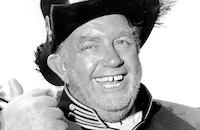
Andy Devine

Brian Donlevy

Phyllis Brooks
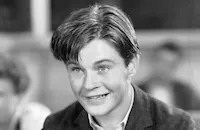
Tom Brown
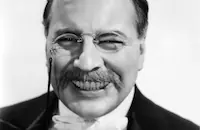
Sidney Blackmer
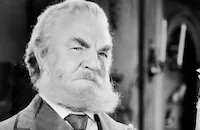
Berton Churchill
June Storey
Paul Hurst
Tyler Brooke
J. Anthony Hughes

Gene Reynolds
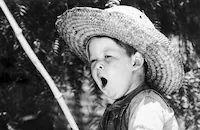
Bobs Watson
Billy Watson
Madame Sultewan
Spencer Charters

Rondo Hatton
Thelma Manning
Ruth Gillette

Eddie Collins
Scotty Mattraw
Joe Twerp
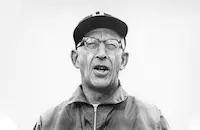
Charles Lane
Clarence Hummel Wilson
Frank Dae
Harry Stubbs
Joe King
Francis Ford
Robert Murphy
Wade Boteler
Gustav Von Seyffertitz
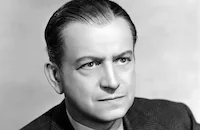
Russell Hicks
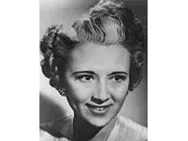
Bess Flowers
Harrison Greene
Rice And Cady
Jack Cheatham
Eleanor Prentiss
Jane Ray
Muriel Scheck
Louise Seidel
Hope Taylor
June Terry
Valerie Traxler
Lurline Uller
Marion Weldon
Dorothy White
Mary Louise Kopp
Billie Lee
Patricia Lee
Patsy Lee
Mary Lorraine
Patty Parrish
Patsy Perrin
Julie Cabanne
Harriette Haddon
Norah Gale
Edna Mae Jones
Jean Joyce
Adelaide Kaye
Crystal Keate
Jacqueline Kopp
Kathryn Barnes
Sue Barstead
Doris Becker
Patsy Bedell
Barbara Booth
Dale Dee
Jeanette Bates
John Roy
Crew
Duke Abrahams
Bob Bertrand
Richard Billings
James Bland
Theresa Brachetto
Harry Brand
Al Bumpus
Niven Busch
Nick Castle
Daniel B. Clark
Clarence Collins
Albert Conti
Edwin H. Curtis
William Darling
Ed. Ebele
Gene Fowler
C. Fremdling
Bobby Fritch
Mack Gordon
K. Green
Eugene Grossman
Ralph Hammeras
N. Hanley
Jack Haskell
Roger Heman
Robert Herndon
Ollie Hughes
H. Bruce Humberstone
Sid Jordan
Max Larey
Bob Lee
Sonya Levien
Arthur M. Levy
Thomas Little
Kenneth Macgowan
Peverell Marley
Charles E. Mccarthy
Booth Mccracken
Barbara Mclean
Sidney D. Mitchell
Ben Nye
Ed O'fearna
Jack Percy
Eddie Petzoldt
Lew Pollack
Jack Raye
Harry Revel
H. Richards
Gale Roe
Royer
Geneva Sawyer
Fred Sersen
Louis Silvers
W. R. Snyder
Rose Steinberg
Rudolph Sternad
Jule Styne
The United Costumers
Frank Tresselt
Lamar Trotti
J. Van Wormer
Robert Webb
Western Costume Company
Walter Whaley
Louis J. Witte
Darryl F. Zanuck

Videos
Movie Clip




Film Details
Technical Specs

Award Wins
Best Assistant Director
Best Supporting Actress
Award Nominations
Best Picture
Best Score
Best Sound
Best Writing, Screenplay
Articles
In Old Chicago
Produced and previewed in 1937 but released in January 1938, In Old Chicago is a fictionalization of the Great Chicago Fire of 1871, in which 3.3 square miles were destroyed in the heart of the city. Legend has it that Mrs. O'Leary's cow started the fire by kicking over a lantern, though an imaginative journalist later admitted that he had invented the story. In Old Chicago not only features the notorious bovine executing her famous kick but also expands on the fiction by depicting the exploits of the entire O'Leary family. In the year 1854, Mrs. O'Leary, played as a determined matriarch by Alice Brady, arrives in a backward but bustling Chicago with her three sons. She opens a laundry service, while her sons grow up to follow three different paths. Jack, portrayed by Don Ameche, becomes a hard-working lawyer who is eager to clean up corrupt Chicago, while little brother Bob, played by Tom Brown, prefers the quiet family life with his Scandinavian wife, Gretchen. Tyrone Power costars as Dion O'Leary, who gambles, drinks, and chases women--most notably, singer Belle Fawcett, played by Alice Faye. Dion takes advantage of the wide, open corruption in Chicago to gain control of politicians and to make his fortune in the Patch, the city's saloon-filled slum. After Jack is elected mayor on the reform ticket, the two brothers square off for control of the city. Little do they know that the city's destiny is about to be determined by the family cow.
Twentieth Century Fox was grooming Power to be a major star when they cast him as the unscrupulous Dion O'Leary. Power's break-through film, Lloyd's of London, had been released in 1936, but his star image had not yet been constructed. Previous roles exploited his handsome good looks but little else. Playing Dion, the scoundrel who is redeemed in the last reel, added a roguish dimension to his star image that was later exploited in films such as Jesse James (1939), The Mark of Zorro (1940), and The Black Swan (1942). For the immediate future, his association with In Old Chicago seemed to target him as the star of disaster films; he also appeared in Suez (1938) and The Rains Came (1939). Studios were always looking for compatible actresses and male costars to play opposite new leading men, and so Alice Faye and Don Ameche were cast as the love interest and the opposing brother. Because Power was so attractive, the studio took care that Power not overwhelm the leading lady. Faye's soft blonde beauty and full figure balanced Power's dark looks and tall frame; she would play opposite Power in three films. The amiable Ameche ended up as Power's costar in four films. The repeated casting of Power with Faye and with Ameche reveals that the studio had a strategy in developing the stars' personas and careers.
In Old Chicago fits neatly into the disaster genre, which gained popularity in the late 1930s. During this era of the genre, the films took place in historical or exotic settings, with the main disaster unfolding in the final sequence. The enormous success of MGM's San Francisco (1936) launched this phase, which also included The Hurricane (1937), Suez, and The Rains Came. Twentieth Century Fox's strategy for In Old Chicago was to closely follow the structure and storyline of San Francisco. In that film, Clark Gable stars as a ne'er-do-well saloon owner in the rough area of San Francisco called Nob Hill. He gives singer Jeanette MacDonald a job in his saloon. Though he is attracted to her, he does not treat her with respect. Gable's close friend is a priest played by Spencer Tracy, who wants to clean up Nob Hill, which eventually pits him against his long-time friend. The famous earthquake of 1906, which concludes the film, changes the destiny of all their lives. The similarities between the films are obvious, though the scale of the sets and the disaster that destroyed them is more impressive in In Old Chicago.
The disaster genre tends to emerge when there is a need to validate faith in America's social institutions and traditional values. During the Depression, families were ripped apart by economic disaster, while social institutions such as religion and education offered little help. The average American tended to blame the government for unemployment as well as the breakdown of social order. The disaster genre soothed doubts and fears regarding social institutions by depicting them as serving society. For example, characters representing institutions--firemen, priests, doctors, political leaders--commit heroic deeds, thereby validating such institutions as law and order, religion, the medical community, or the government. This certainly holds true in In Old Chicago. For much of the film, the city thrives on corruption because it is run by gamblers and saloon owners, like Dion O'Leary. But, in the climactic fire, Mayor Jack O'Leary commits a heroic act for the greater good, while Mother O'Leary strives to keep her family intact. Police and fire crews work tirelessly to corral residents and contain the fire. Thus, the social institutions of government, family, and law and order come through for the community.
Within the course of a disaster film, the hallmarks of civilization--from moral codes to personal relationships to social institutions--are sorely tested. And yet, moral responsibility and sacrifice, combined with healthy social institutions, are the reasons the community ultimately survives. Subsequently, those who make their way out of the rubble often declare a renewed appreciation for traditional values and ideals, as when the O'Leary family promises to stick around and help rebuild Chicago after the Great Fire.
Large-scale special effects are also a convention of the disaster genre. Sometimes, easily recognizable landmarks like the Statue of Liberty or the Empire State Building are destroyed as part of the catastrophe, signaling that our culture and traditions are under siege. However, in the disaster drama of the Depression era, the catastrophes consisted of the whole-scale destruction of historic cities such as San Francisco, Chicago, and Ranchipur. The demolition of a major city became the anticipated part of these historical disaster dramas, and audiences anxiously awaited the spectacle, eager to judge how realistic it all was. The hellish fire that concludes In Old Chicago takes up most of the third act, making the film one of the most expensive to that date. A variety of mattes, miniatures, full-scale sets, and forced perspective backgrounds were seamlessly integrated to suggest the scope and breadth of the disaster. The terror created by the visual effects was enhanced by the sound effects, which director Henry King wisely chose over a heavily orchestrated score. Robert Webb won an Oscar for his work as assistant director, which marked the last time this award was given out. The effects work was ably handled by H. Bruce Humberstone.
In Old Chicago was nominated for six Academy Awards, including Best Picture. In addition to Webb, Alice Brady won as Best Supporting Actress. The appeal of In Old Chicago then--as now--was the spectacle. Audiences were caught up in the spectacle, astonished and humbled by the destruction that Mother Nature can bring in the blink of an eye, and grateful that they themselves escaped such a fate. That might be the fundamental appeal of watching disaster films in any era.
By Susan Doll
Producer: Darryl F. Zanuck and Kenneth Macgowan for Twentieth Century Fox
Director: Henry King
Assistant Director: Robert Webb
Screenplay: Lamar Trotti and Sonya Levien from a story by Niven Busch
Cinematography: J. Peverell Marley
Editor: Barbara McLean
Special Effects Director: H. Bruce Humberstone
Music: Louis Silvers
Art Directors: William S. Darling and Rudolph Sternad
Costumes: Royer
Sound: Edmund H. Hansen
Cast: Dion O'Leary (Tyrone Power), Belle Fawcett (Alice Faye), Jack O'Leary (Don Ameche), Molly O'Leary (Alice Brady), Gil Warren (Brian Donlevy), Pickle Bixby (Andy Devine), Ann Colby (Phyllis Brooks), Bob O'Leary (Tom Brown), General Philip Sheridan (Sidney Blackmer), Senator Colby (Berton Churchill), Gretchen (June Storey), Patrick O'Leary (J. Anthony Hughes), Hattie (Madame Sultewan), Rondo (Rondo Hattan)

In Old Chicago
Quotes
"Nothing can lick Chicago!"- Dion O'Leary
Trivia
Alice Brady won a Best Supporting Actress Oscar for her role in this film. Brady wasn't present at the award ceremony, but a man walked up and accepted the award on her behalf. After the show, he and the Oscar were never seen again.
MGM had originally planned to "loan out" Jean Harlow to Twentieth-Century Fox for the role of Belle Fawcett (ultimately played by Alice Faye), in exchange for acquiring Shirley Temple to play the role of Dorothy in Wizard of Oz, The (1939). The deal fell through when Harlow died in June 1937.
Notes
After the opening credits, a title card reads: "We acknowledge with appreciation the assistance of the Chicago Historical Society in preparation of the historical background for this production." According to a Los Angeles Times article, following the great success of M-G-M's San Francisco (see AFI Catalog of Feature Films, 1931-40; F3.3891), which featured a long sequence of earthquake and fire scenes, Darryl Zanuck, Twentieth Century-Fox's vice-president in charge of production, decided to make a film based on another historical disaster, the Chicago fire. According to a New York Times article on the film, the Chicago fire, which occurred on October 9, 1871, burned four square miles of buildings, destroyed $2,000,000 worth of property and killed at least 300 people. According to information in the Twentieth Century-Fox Records of the Legal Department at the UCLA Theater Arts Library, soon after the fire started, Chicago businessman Charles H. Coles investigated the barn where the fire was rumored to have originated and found no evidence of an overturned lamp. Concerning the origination of the film's story, according to the legal records, Warner Bros. had registered two titles with the MPPDA title registration committee that pertained to the Chicago fire ahead of Twentieth Century-Fox; after Warners dropped The Chicago Fire in October 1936, Twentieth Century-Fox, which had that title on the reserve list, assigned two writers, Niven Busch and Richard Collins, to write separate story outlines under that title. According to Variety and Los Angeles Times news items, Collins' work was based on the novel Barriers Burned Away by E. P. Roe (New York, 1872). Although Gene Fowler sat in on some conferences with Busch and did some research work, he did no actual writing for this film. After Busch completed his original story, he worked with Sonya Levien on a treatment; Levien and Lamar Trotti then wrote a screenplay based on Levien and Busch's treatment. As the legal records state that nothing in the film was based on Roe's novel, it does not appear that any of Collins' work was used in the final film. Although Twentieth Century-Fox publicity stated that Busch's story was originally entitled "We the O'Learys," a communication in the legal records notes, "there never was a story 'We, the O'Learys' by Niven Busch nor by anybody else. The idea that Niven Busch had written an original story 'We the O'Learys' was developed by someone in our organization after the story and screenplay had been completely written, and this person or persons believed that it would be a clever idea to utilize the name of 'The O'Learys' and give Busch's original story a more catch title than 'The Chicago Fire.'"
According to information in the MPAA/PCA Collection at the AMPAS Library, when the final script was submitted to the PCA for approval, PCA Director Joseph Breen wrote a five page letter in which he detailed many "offensive or questionable details" that led him declare that the material "is not acceptable under the provisions of the Production Code." The major offending details that Breen listed concerned the depiction of prostitutes and "Miss Lou" as a madame and the description of "Belle's" apartment to suggest that she is a prostitute and that she uses her home "to ply her trade." Zanuck agreed to make Breen's changes and stated that it was never the studio's intention to characterize "Belle" as a prostitute.
The film was known as Chicago during pre-production, and in June 1937, Twentieth Century-Fox was granted the right by the MPPDA to use the title In Old Chicago over the protest of Columbia, which earlier had bought the rights to "Chicago" from Pathé, according to a Film Daily news item. According to a Hollywood Reporter news item dated June 1, 1937, M-G-M and Twentieth Century-Fox negotiated a swap to send Jean Harlow to Twentieth Century-Fox for the female lead in this film and Tyrone Power to M-G-M for Madame X. Harlow, however, died on June 7, 1937. According to Hollywood Reporter news items, Janet Beecher tested for the role of "Mrs. O'Leary," and June Storey replaced Virginia Field, who was then able to play a more important role in Ali Baba Goes to Town (see AFI Catalog of Feature Films, 1931-40; F3.0056). According to a Hollywood Reporter news item dated July 13, 1937, Jack Haskell resigned as dance director, and he was replaced by his assistants, Geneva Sawyer and Nick Castle. The news item noted that Sawyer was the only woman dance director in the studios. According to Hollywood Reporter, Andy Devine and Alice Brady were borrowed from Universal, and the legal files note that location shooting was done at Oakdale, CA and near Yuma, AZ. Although the song, "Strolling with My Lady Love," by Lew Pollack and Sidney D. Mitchell, was submitted to the PCA for approval in connection with this film, it was not used in the final film.
New York Times stated that this had the largest budget of any Twentieth Century-Fox film, and a review noted that the cost was about $2,000,000. The fire sequence, which, according to Time, at twenty-five minutes, was longer than the hurricane sequence in Hurricane (see AFI Catalog of Feature Films, 1931-40; F3.2034), cost $500,000, according to a press release. New York Times notes that the wardrobe budget was $80,000. According to publicity for the film, Western Costume Co. could not supply all the costumes necessary, so the studio had to go to all the other costume companies in Los Angeles and even to some in New York. According to information in the legal files, a lantern manufacturer wrote to the studio stating that the best authorities claim that it was a lamp, not a lantern, that the cow tipped over to start the Chicago fire and that a lantern would extinguish itself when tipped over. Herbert Levy, Walter Strohm and two assistants tested the claim, however, and found it false.
According to Variety, the film was originally exhibited in two parts with an intermission after about eighty minutes, taking the story to the eve of the fire. According to information in the legal records, Philip Wylie wrote a serialization of the screenplay, which was published in newspapers including DN (L.A.) (3 January-25 January 1938), and a condensation of the screenplay was published in The Ten Best Pictures of the Year by Frank Vreeland. In addition, the first twenty-five sequences were published in a textbook for use in schools and colleges by The Macmillan Co. The film received Academy Awards for Supporting Actor (Alice Brady) and Assistant Director (Robert Webb), and nominations for Best Picture, Writing-Original Story (Niven Busch), Music-Best Score (Louis Stevens) and Sound Recording. The film ranked sixth on the Film Daily poll of critics of America.
According to modern sources, Zanuck originally wanted Clark Gable for the male lead. Modern sources also state that although H. Bruce Humberstone, who received screen credit as the director of special effects scenes, took out ads in trade journals claiming that he directed the fire sequence, in reality, he directed the scenes of going to the fire, but not the actual fire scenes. Modern sources list the following additional cast members: Harry Hayden (Johnson, Jack's secretary), Vera Lewis (Witness), Minerva Urecal (Frantic mother) and Ed Brady (Wagon driver). Radio versions were broadcast on the Philip Morris Program (10 December 1943) and the Lux Radio Theatre (9 October 1944), and in 1957, Twentieth Century-Fox Television Productions produced "City in Flames," based on the same story and screenplay, as an episode for The 20th Century-Fox Hour; the program was produced by Sam Marx, directed by Albert S. Rogell and starred Anne Jeffreys and Kevin McCarthy.

Miscellaneous Notes
Released in United States 1938
Released in United States 1938













